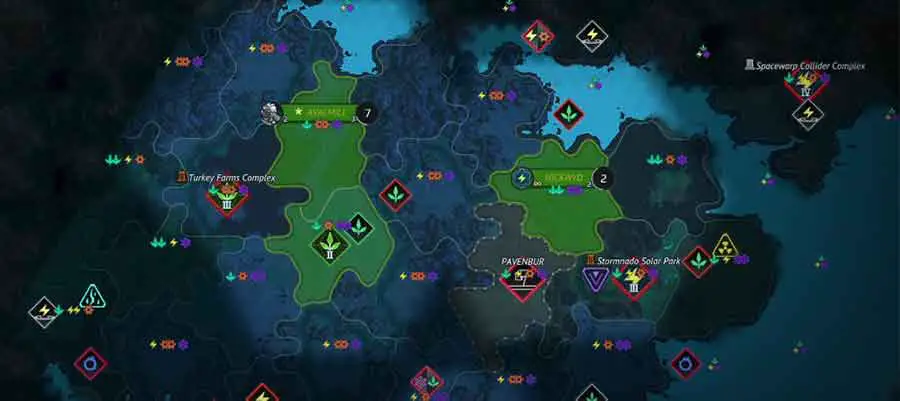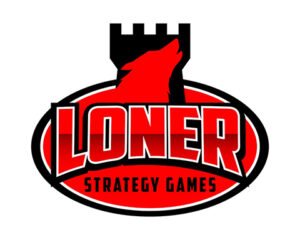
Age of Wonders: Planetfall is a turn-based game that emphasizes combat as you try to uncover the secrets of the long dead Star Union. The economy consists of four things in this game, food, research, production and energy. You can assign any province you annex to specialize in one of these four areas.
The best way to grow and thrive economically is to first focus on food so your colony’s population will grow. The best opening strategy economically, and best early game strategy, is to get a second colony up and running as quickly as possible that focuses on food production, allowing you to increase colonists quickly.
Food is the basic building block for colony growth. Obviously, the more growth you have the more economic income you gain, and with that you can drive the military force you need to tame a new world. Colonies can be ordered to share food with other colonies and increasing food supplies is usually done by annexing sectors and specializing them in food production.
Read More: Interested in learning about other games, like Stellaris, Civ 6, or Crusader Kings III?
Since your colony HQ is geared for production you need to send a scout out to find an area rich in food resources so you can establish a second colony specializing in food production. Scrolling the map out changes it into an overlay where you can see the features of the areas you’ve explored. Not only should you look for areas with two or more food icons, you also need to check out the diamond shaped icons. The ones with a food icon inside them will produce bonuses, like an overgrown biodome that gives an additional 10 food per turn to its colony. If the diamond is outlined in red then prepare for a fight before you can annex it since that indicates it is occupied by enemy forces. If you want tips on how to eliminate those enemy forces check out my Age of Wonders: Planetfall Combat Tips page.
Always pay attention to diamonds and triangle shaped icons. Triangles represent hazards that can usually be eliminated through research and diamonds always represent good sectors to exploit.
Once you’ve got a colony producing a lot of food set its food sharing option to “Share Half” and let all the other cities take from the Global Pool. This will rapidly increase your pops and give your economy a great start at the beginning of the game.
Keep annexing and exploiting nearby sectors for all your colonies. To annex a sector move a unit onto a sector flag and choose annex. You can choose what resource to mine from the settlement menu on the next turn.
Food Sharing Between Colonies
When a colony shares food it allows a colony with a lot of food production to distribute it to colonies with low food production, or to a global food pool, thus preventing widespread starvation. A colony can share food in one of four ways. The default option is “Prevent Deficit” although there are three other options that can be selected. With this option all food is used to increase the colony population while not taking any food from the global pool unless starvation is occurring.
The food sharing option for a colony can also be set to “Take.” With this option your colony is allowed to take as much food as it wants from the Global Pool to promote growth. The amount taken can never exceed what’s needed to raise your population by 1 colonist.
When the Food Sharing option of “Share All and Sell Excess” is selected any food not needed by the colony is placed in the Global Pool. Excess food at the end of the turn is sold for energy.
“Share Half” is the final Food Sharing option. Half the colony’s unused food is placed in the Global Pool, the rest is dedicated to growing the colony’s population. Whenever sharing food with other colonies there is a 40% tax, which translates to a 40% loss in food.
During the early game there are several research options and structures available to help increase food production. Through researching tier 2 food development you gain access to food sector upgrades and the structures of Bioengineered Food Plantation and Agricultural Export Center.
A Food Sectors upgrade increases the level of all food sectors by 1. This gives you increased outputs from any sector exploitations and specializations you may have in place. A Bioengineered Food Plantation allows you to produce “super foods” which means your colonists get the same benefit (being well-fed) from less foods. The benefits get better as levels increase, from needing 10% less food for colonist growth to -30% at level 5. At the higher levels colonist upkeep gets cheaper too. At level 5 that upkeep is reduced by 2 food per colonist.
Once the Agricultural Export Center becomes available your food distribution exportation becomes significantly better. This is a sector specialization that reduces the food tax sharing penalty by 30% at level 1. The penalty continues to be reduced as the levels progress until level 3, then the penalty reduction starts diminishing again. This is offset by an increase in food production per colonist employed in the food sector. It maxes out at level 5, where the penalty reduction is once again 10% but food production is increased by 3 per colonist employed in the food sector.
Research Is Another Key To Survival
You need to conduct research to keep your economy thriving and to be able to effectively defend your colonies. Research will generally increase your technology to the point where you gain new colony structures, new units, new unit mods, new operations and new doctrines, which helps increase food production.
There are a lot of ways to gain knowledge, either by annexing landmarks and resource nodes that provide knowledge, using sector exploitations that give knowledge bonuses and building certain colony structures that generate knowledge and doctrines. Assigning colonists to knowledge slots is another way to gain knowledge.
Research options are shown in two research trees, one representing military research and the other representing society research. The tech trees are also customized by your race type and secret technology. Knowledge is added equally to both trees at the same time, which is what is used to conduct research, meaning you don’t have to research one at the expense of the other.
Military research is where you gain units mods and new units to improve your army. There are three areas of specialization, racial, weapons and secret technology. With enough research you can even learn how to create the ultimate Doomsday Weapon.
Society research focuses on economic development, polices your government has at its disposal, and espionage. Like the military branch, it has three areas. Researching doctrines gives you additional governmental polices for guiding your faction, focusing on economy allows you to improve your colonies and researching operations improves any operations you might undertake, plus it can unlock undercover operations you can conduct against friends and enemies.
Production is used by colonies to build things like buildings, for both the colony and its sectors, and to build units to protect your budding empire. Production ques are unique to each colony, meaning your civilization can build more than one thing at a time. Anything built has a cost associated with it, and the cost may take several turns to fulfill. Each colony can only work on producing one thing at a time. A colony can choose to produce either knowledge or energy instead of building something. In the event that something is urgently needed production can be “hurried.” This is done by clicking on the “Buy Now” button. When this is done the appropriate amount of energy is deducted from your stockpile, assuming you have enough energy available to cover it.
Although only one thing can be built at a time you can have several items lined up for production in the future. Whenever queuing up production items the Energy and Cosmite costs are deducted right away. Removing an item from the production que will give you an immediate refund on those investments, so they’re not lost if you change your mind.
Similar to food and research, production can be increased through sector exploitation and by assigning colonists to production slots.
The final item in the resource list is energy. Energy is used to create things like structures and units. It’s also used to maintain units, for launching operations and to modify units. Each colony adds to the overall amount of energy available to you, and anything spent is taken away from this global amount. Like the other resources it can be increased through sector exploitation and by assigning colonists to energy slots. As previously mentioned, energy can be produced by using a colony’s production to produce energy rather than building a unit or building. Energy is produced by a 4 to 1 ratio, meaning for every 4 production spent on producing energy 1 unit of energy is produced.
Don’t forget to visit my YouTube channel at https://www.youtube.com/channel/UCcWU6qxVisK93h5guKRVtdg
